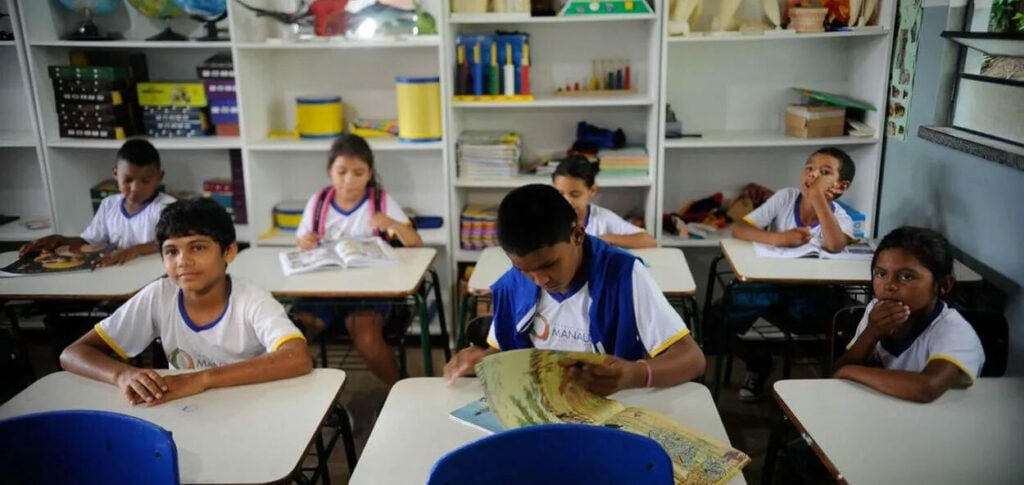Over the years, Brazilian students had been improving learning as measured by national assessments. In the 2019 edition of Saeb, secondary education had recorded a historic high. In 2021, the first post-pandemic application was carried out.
ADVERTISING
Due to the suspension of classes, closing of schools and lack of access to remote teaching, the drop observed in student learning “does not exceed what was expected”, according to Saeb coordinator, Clara Machado.
Em all stages of teaching evaluated were drops in grades for knowledge in Portuguese and Mathematics. (The Globe)🚥
Despite the results, the All for Education, NGO specialized in the subject, considered that the data from Saeb and also from Ideb, released this Friday by the Ministry of Education.
ADVERTISING
“The atypical context of collecting information and applying tests, caused by the pandemic, requires even greater care than usual when comparing results with previous years and between education networks in the country. These issues had already been expressed by Todos Pela Educação in a note published yesterday, the day before the release. Next, we update the main messages.”
Priscila Cruz, Priscila Cruz, executive president of the organization, also made comments on Twitter:
See the results on Mathematics and Portuguese released this Friday (16) by the National Institute of Educational Studies and Research Anísio Teixeira (Inep):
ADVERTISING
Mathematics
Currently, 10-year-old or 5th-year students in public and private schools are unable to solve math problems with addition and subtraction of coins, for example, involving half and triple natural numbers. These children, who during the pandemic started the 4th year – and were often in the final phase of literacy – form the group that obtained the lowest overall averages in the test.
High school students showed a drop of 8,73 in their average grade in Mathematics. This means that they are unable to determine an adjusted value of an amount based on its initial value and the adjustment percentage. The average also fell to levels that were recorded in 2013.
Portuguese
Between 2019 and 2021, the percentage of students with literacy levels below expectations more than doubled, according to MEC data. Previously, 15,5% of students did not know how to read or write simple words, and in 2021, this figure rose to 33,8%.
ADVERTISING
Among 5th year students, the regression in Portuguese was smaller than in Mathematics, but compared to other grades, this was the group that recorded the biggest drops. In Portuguese, the drop in the average was 6,6 points, equivalent to half a school year.
As Young children are also less autonomous to follow the remote teaching that students teenagers. On the other hand, they returned to schools in droves, which did not happen in High school — many young people had to work and abandoned their studies.
Student participation
In the 2021 test, due to the pandemic, there was a drop in student attendance. In relation to the previous edition, the rate went from 80,99% to 76,9%, reaching a level considered very low. The drop was especially true among high school students, going from 84,7% in 2019 to 59,5% in 2021.
ADVERTISING
Brazilian Education Development Index (Ideb)
Also this Friday (16), the results of the Ideb – Brazilian Education Development Index – were released, which measures the quality of Brazilian education.
O Ideb 2021 varies little compared to 2019, but data is 'misleading', say experts, since the index is a formula that combines learning (Mathematics and Portuguese) with the number of students approved. However, due to the pandemic, there was a distortion in approval rates as the National Education Council itself instructed schools to approve students who were unable to attend physical classes and many were not even able to follow the content online. (G1)
According to Todos pela Educação, “the atypical situation of distortion of student approval rates during the pandemic INVALID general comparisons about the evolution of the ideb in Ideb 2021 networks and comparisons between networks. .”
What is Ideb?
Ideb is calculated based on data on school approval, obtained from the School Census, and performance averages in the Basic Education Assessment System (Saeb).
O All for Education believes that the data from the Saeb and Ideb 2021 published by Inep will be particularly useful to be observed and used within each education network and each school, which knows their realities and can better contextualize each information. This data can be added to other data already collected, seeking to guide learning recovery actions.
What is Saeb?
The Saeb is a biennial test, carried out since 1990, which must be taken every two years by all students in the 5th and 9th years of Elementary School and the 3rd year of High School.
In addition to the exams, questionries to students, teachers, principals and municipal education secretaries. In 2021, Natural Sciences and Human Sciences tests were also taken at Saeb for the 9th year and, since 2019, students in the 2nd year of elementary school have been taking Portuguese and Mathematics exams.



